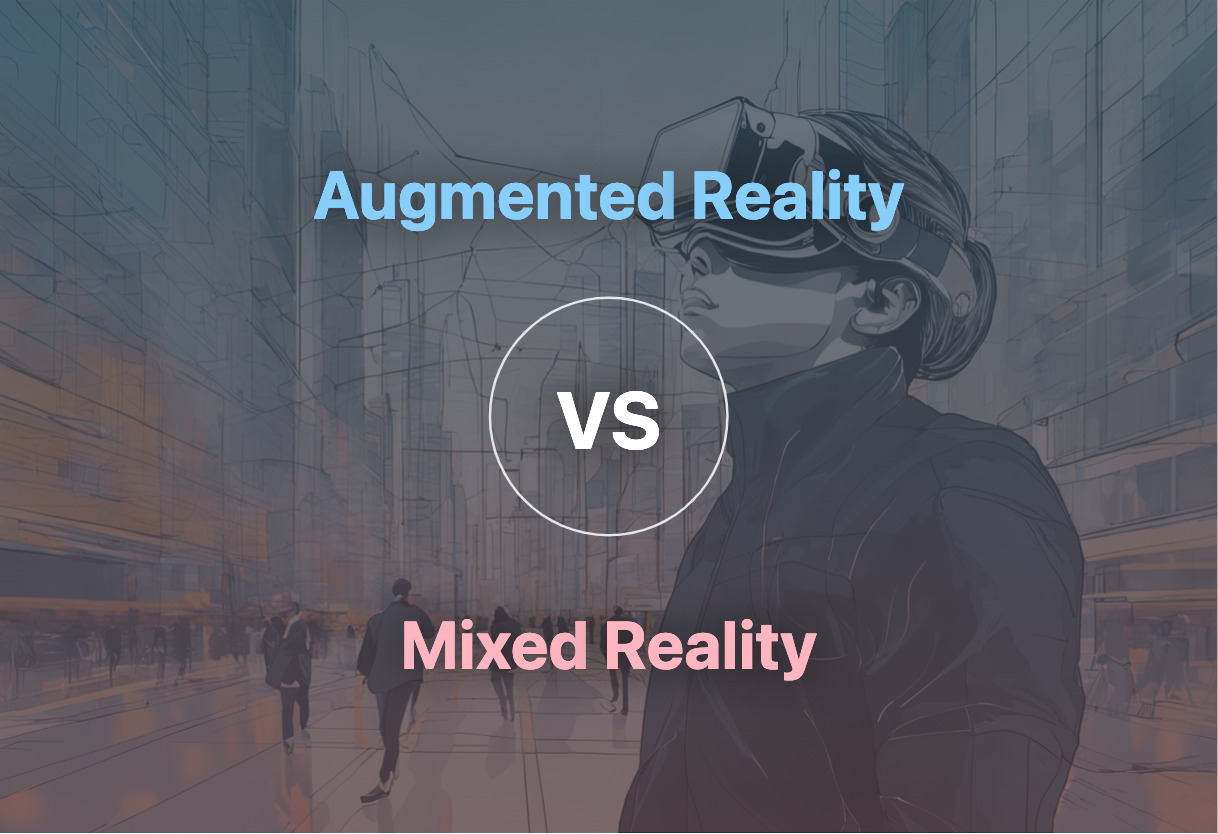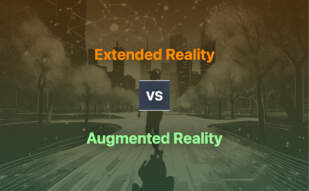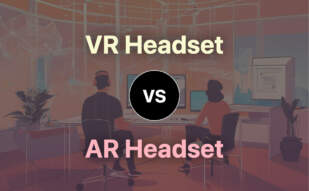In comparing Augmented Reality (AR) against Mixed Reality (MR), for immersive experiences merging the virtual and the real with interactivity, MR triumphs; but for efficient cost and mobile device compatibility, AR takes precedence.

Key Differences Between Augmented Reality and Mixed Reality
- Origin: AR technology was developed in 1968 while MR was introduced in 1994.
- Devices: AR uses mobile devices, glasses and AR projectors while MR uses Microsoft HoloLens, Samsung Odyssey and other VR devices.
- Interactivity: AR overlays digital content while MR allows interactivity with digital and real-world elements.
- Applications: AR is used in retail, entertainment, learning, and more. MR has applications in healthcare, architecture, gaming and more.
- Cost: AR devices and applications are generally cheaper while some MR devices range from $300 to $3000.
| Comparison | AR Technology | Mixed Reality (MR) |
|---|---|---|
| Initial development | 1968 | 1994 |
| Industrial Applications | Marketing, fashion, tourism, retail, remote work, collaboration | Healthcare training, architecture visualization, immersive gaming, interactive storytelling, aircraft technician training, construction task completion, supply chain management |
| Popular Devices | AR Glasses | HoloLens, Samsung HMD Odyssey+, Acer MR Headset |
| Technologies Involved | AI, AR Software, 3D Images recognition, SLAM, Sensors | Big Data, Cloud Computing, Advanced AI |
| Type of Experience | Improved Real-word scenario. Augmentation within environmental context | Blend of Physical and Digital Worlds. Interaction between real-world and digital elements |
| Future Projections | Increasing popularity with AR games and apps with expanded 5G network | Expected to become $1.2-$6.9 billion global industry by 2024. Advances in Smartphones, Tablets, Smart Eyeglasses expected |
| Significant Developments | Outdoor helmet-based AR system by Trimble Navigation in 2004 | Yellow ‘first down’ line in televised football games in 1998, MRTouch with HoloLens’ |
What Is Technology 1 and Who’s It For?
Technology 1, Augmented Reality (AR), is a transformative technology that overlays digital data on real-world environments, enhancing user perception and interaction. Born out of the genius of Ivan Sutherland in 1968, AR has evolved to bridge gaps in communication, entertainment, and education, thanks to mobile innovations. Anyone from a curious gamer to a meticulous manufacturing professional can benefit from AR’s immersive potential.
AR makes inroads in industries like marketing, fashion, tourism, and retail, offering unique values and experiences that aren’t found in earlier technologies. Ask make-up companies about virtual “try-ons”; they’ll testify to its immersive utility. The many faces of AR – from SLAM to marker-based/marker-less types – represent a world enriched by artificial intelligence, real-time interactions, and data processing capabilities.

Pros of Technology 1
- Enhances real-world perception with meaningful, context-specific content.
- Boosts customer engagement and sales in retail and marketing.
- Facilitates immersive remote work and learning.
- Expands exploration of cultural, historical, and geographical insights.
Cons of Technology 1
- Dependent on the capabilities of user’s mobile device.
- May require high processing power and advanced sensors.
- Quality of AR experience may vary on light conditions.
- Reliant on AI and large data sets, with associated privacy concerns.
What Is Technology 2 and Who’s It For?
Technology 2, Mixed Reality (MR), is a blend of the digital and physical worlds, transporting users to a realm of intuitive human-computer-environment interactions. Born in 1994 out of the pioneering work of Paul Milgram and Fumio Kishino, MR is stained deep with the possibilities of cloud computing, big data, and Artificial Intelligence.
MR appeals to physicians honing surgical procedures, architects visualizing designs, gamers seeking thrills, and storytellers making narratives come alive. The all-embracing potent digital-physical blend of MR is unfolding pathbreaking use in sectors like healthcare, construction, entertainment, and beyond, underlined by the blossoming ubiquity of devices like Microsoft HoloLens and Samsung HMD Odyssey+.

Pros of Technology 2
- Enables natural, intuitive 3D human-computer-environment interactions.
- Supports immersive training, visualization, gaming, and storytelling applications.
- Presents potential as a cost-effective, efficient training tool in industries like aviation and construction.
- Contributes to immersive B2B communications and supply chain management.
Cons of Technology 2
- Tends to be expensive.
- Requires high-tech devices for full experience.
- Could lead to data privacy and ethical issues.
- Heavy graphics may lead to system overloading or user discomfort.
Augmented Reality or Mixed Reality: The Verdict
The future glimmers brightly as we straddle between Augmented Reality (AR) and Mixed Reality (MR), but what technology should you choose?
For Developers
If you’re targeting applications in diverse sectors, ranging from games to retail, AR is your go-to. Integraing AR into mobile app experiences, you’ll benefit from the enriched interaction. Many AR apps already pose practical relevance across entertainment, gaming and more.
For Gamers
In search of immersive gaming? Choose Mixed Reality. Its power lies in constructing a seamless blend of physical and virtual gaming realms. Its fandom is cemented by it’s IR sensors and holographic capabilities that makes user interaction natural and intuitive.
For Marketers
AR offers a whole new dimension for marketers. Engage your customers with “try-on” applications and AR-crafted immersive experiences at events. You’ll exploit AR’s potential for enhanced customer interaction and meaningful content production.
For Healthcare Professionals
Healthcare industry reaps significant benefits from Mixed Reality. Training healthcare professionals using MR technology is setting new standards for precise medical procedures, a different league in safety and efficiency we dare say.
For Educators
Use AR to take your students on a remarkable journey! AR promotes interactive learning, aiding the exploration of cultural, historical, and geographic aspects of the environment leading to an enriched learning experience.
AR augments mobile user experience effortlessly while MR fully immerses user interactions between the real and digital world. AR ‘enriches’ with overlay, MR ‘blends’ with realistic interaction. Choose AR for diversified application, pick MR for interactive immersion. Your future, your call.
Grant Sullivan
Content writer @ Aircada and self proclaimed board game strategist by day, AI developer by night.





